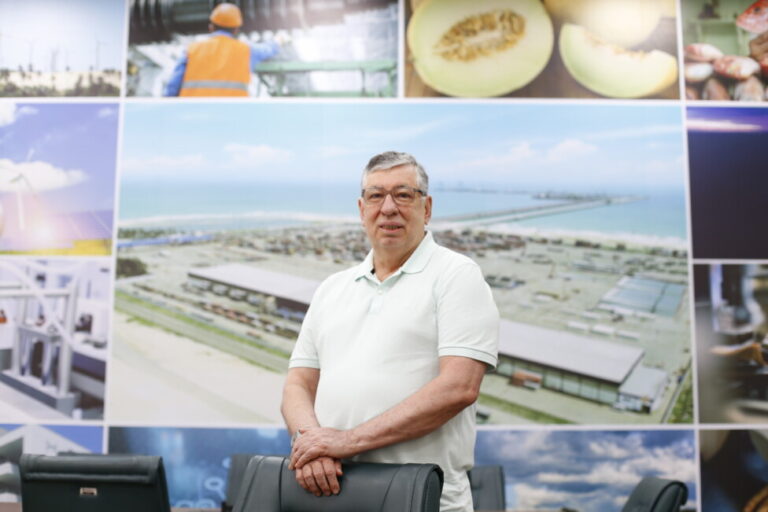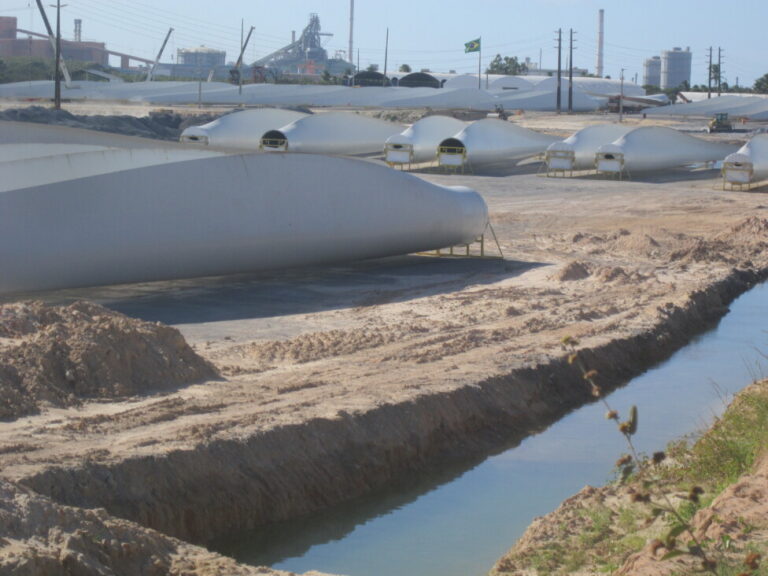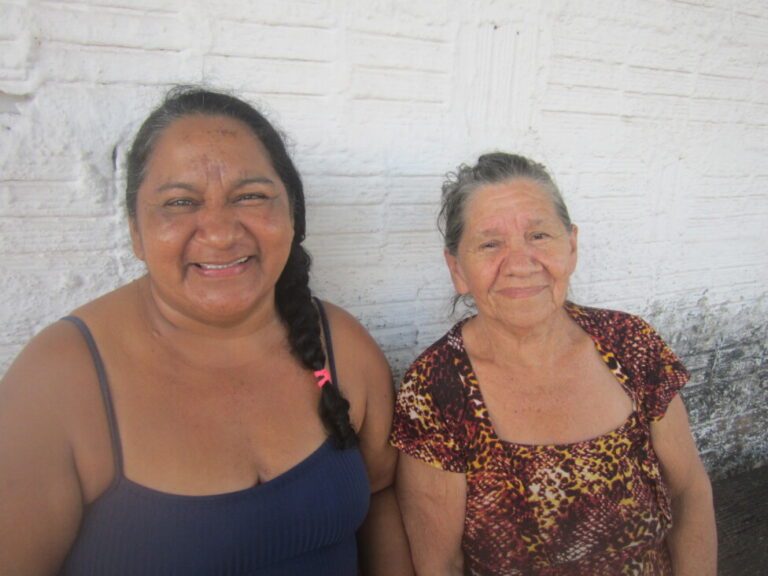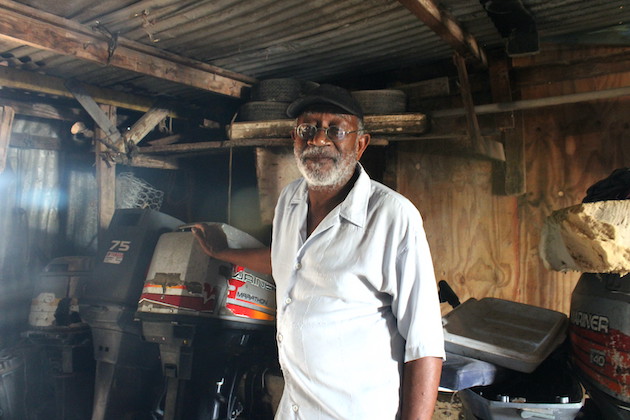Great Wind and Solar Potential Boosts Green Hydrogen in Northern Brazil — Global Issues
FORTALEZA, Brazil, Sep 15 (IPS) – Brazil could become a world leader in the production of green hydrogen, and the northeastern state of Ceará has anticipated this future role by making the port of Pecém, with its export processing zone, a hub for this energy source.
The government of Ceará has already signed 22 memorandums of understanding with companies interested in participating in the so-called “green hydrogen hub,” which promises to attract a flood of investment to the Pecém Industrial and Port Complex.
“If 30 to 50 percent of these projects are effectively implemented, it will be a success and will transform the economy of Ceará,” predicted engineer and administrator Francisco Maia Júnior, secretary of Economic Development and Labor (Sedet) in the government of this state in Brazil’s Northeast region.
The lever will be demand from “countries lacking clean energy,” especially the European Union, pressured by its climate targets and now by reduced supplies of Russian oil and gas, in reaction to Western economic sanctions on Russia for its invasion of Ukraine.
Ceará has special advantages because of its huge wind energy potential, both onshore and offshore, in addition to abundant solar energy.
Hydrogen is produced as a fuel through the process of electrolysis, which consumes a large amount of electricity, and in order for it to be green, the electricity generation must be clean.
The state also has Pecém, a port built in 1995 with an industrial zone and an export zone, which is the closest to Europe of all of Brazil’s Atlantic ports.
Water, the key input from which the hydrogen in oxygen is broken down, will be reused treated wastewater from the metropolitan region of Fortaleza, capital of Ceará, 55 kilometers from the port. “It is cheaper than desalinating seawater,” Maia told IPS in his office at the regional government headquarters.
Fortaleza has the first large-scale desalination plant in Brazil, which is the source of 12 percent of the water consumed in this city of 2.7 million people.

Wind and solar potential
“Ceará is extremely privileged in renewable energies,” electrical engineer Jurandir Picanço Júnior, an experienced energy consultant for the Federation of Industries of Ceará (Fiec) and former president of the state-owned Ceará Energy Company, which was later privatized and acquired by Enel, the Italian electricity consortium, told IPS.
Wind and solar generation potential in the state was double the electricity supply in 2018, according to the Wind and Solar Atlas of Ceará, prepared in 2019 by Fiec together with the governmental Ceará Development Agency and the Brazilian Micro and Small Business Support Service.
Moreover, the two sources complement each other, with wind power growing at night and dropping in the hours around midday, exactly when solar power is most productive, said Picanço at Fiec headquarters, showing superimposed graphs of the daily generation of both sources.
The Northeast is the Brazilian region where wind power plants have multiplied the most, and their supply sometimes exceeds regional consumption. The local winds “are uniform, they do not blow in gusts” that affect other areas in the world where they can be stronger, said Maia. They are also “unidirectional,” said Picanço.
“The International Renewable Energy Agency (Irena) has recognized the Northeast as the most competitive region for green hydrogen,” said Picanço, forecasting Brazil’s leadership in production of the fuel by 2050. “Brazil is still hesitating in this area, but Ceará is not,” he said.

Having Pecém, a port through which 22 million tons a year pass, and its neighboring special economic zone (SEZ), with benefits such as tax reductions, enhances the competitiveness of Brazil’s hydrogen.
The port will have structures for storing hydrogen in the form of ammonia, which requires very low temperatures, with companies specialized in its transport and electrical installations with plugs for refrigerated containers, all factors that save investments, said Duna Uribe, commercial director of the Pecém Complex.
Link with Rotterdam
In addition, Rotterdam in the Netherlands, Europe’s largest port, has been a partner in Pecém, a state-owned company of Ceará, since 2018, with 30 percent of the shares. That brings credibility and attracts investments to the Brazilian port, Maia said.
This partnership is due in particular to Uribe, a young administrator with a master’s degree in Maritime Economics and Logistics from Erasmus University in the Netherlands, who worked at the Port of Rotterdam.
The complex currently generates about 55,000 direct and indirect jobs, 7,000 of which are in the port, where some 3,000 people work directly in port activities and in companies that operate there.

Pecém was born in 1995 with an initial focus on maritime transportation and two basic projects: a private steel industry to be installed in the SEZ and a state-owned oil refinery, which did not work out.
But the complex has always had an energy vocation, with four thermoelectric power plants, two coal-fired and two natural gas-fired, as well as a wind blade factory and two cement plants.
Social effects
“The port was good because it gave jobs to many people here who used to grow beans, sugarcane, bananas, and today they no longer have land to farm,” Zefinha Bezerra de Souza, 76, who has lived in the town of Pecém since 1961, told IPS.
One of her sons is still fishing. The port did not affect fishing, which is done far out at sea, she said.
One of the first to start working at the port was Terezinha Ferreira da Silva, 54. She started working for the Andrade Gutierrez construction company in 1997, in charge of the port’s initial works, and was later hired by the Complex’s administrator, where she is in charge of receiving documents and is a telephone operator.

“I was earning very well, I was able to build my house” in the town of Pecém, she said. The town, a few kilometers from the port, had 2,700 inhabitants according to the official 2010 census and twice as many people living in the surrounding rural area.
The “hydrogen hub” will start to become a reality in December, when the private company Energias de Portugal, from that European country, inaugurates a pilot hydrogen plant in the SEZ.
The wealth generated by the hub will initially be concentrated in Pecém, but will then radiate throughout the Northeast, because it will require numerous wind and solar energy plants to be installed in the region’s interior, Uribe told IPS in Fortaleza.
The installation of offshore wind farms is planned, but in the future. This activity has not yet been regulated and there will be a need for power transmission lines and training of technicians, she explained.

Hydrogen culture
Adaptations in local education, with changes at the university, are picking up speed. Since 2018, the state-owned Federal University of Ceará has had a Technological Park (Partec).
A hotel that was built on the university campus to host fans for the 2014 World Cup has been transformed from a white elephant into a green hydrogen research center, said Fernando Nunes, director-president of Partec.
Encouraging practical research and the emergence of new technology companies is one of its tasks, which are gaining new horizons with hydrogen.
It is necessary to train technicians even in the interior, because in the future hydrogen, initially intended for export, will be disseminated in the domestic market, “with mini-plants, when the cost comes down to reasonable levels,” Nunes told IPS.
“Energy will be the redemption of the Northeast, especially Ceará, where we already generate more electricity than we consume,” he said.
The promotion of hydrogen in Ceará is being carried out in a unique way, by a Working Group made up of the state government, represented by Sedet and the Secretariat of Environment, the Federation of Industries, the Federal University and the Pecém Complex.
© Inter Press Service (2022) — All Rights ReservedOriginal source: Inter Press Service
Check out our Latest News and Follow us at Facebook
Original Source







